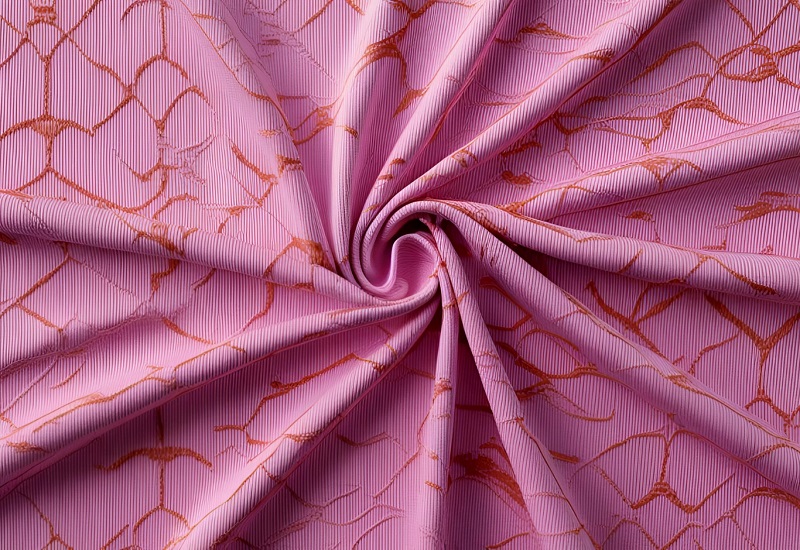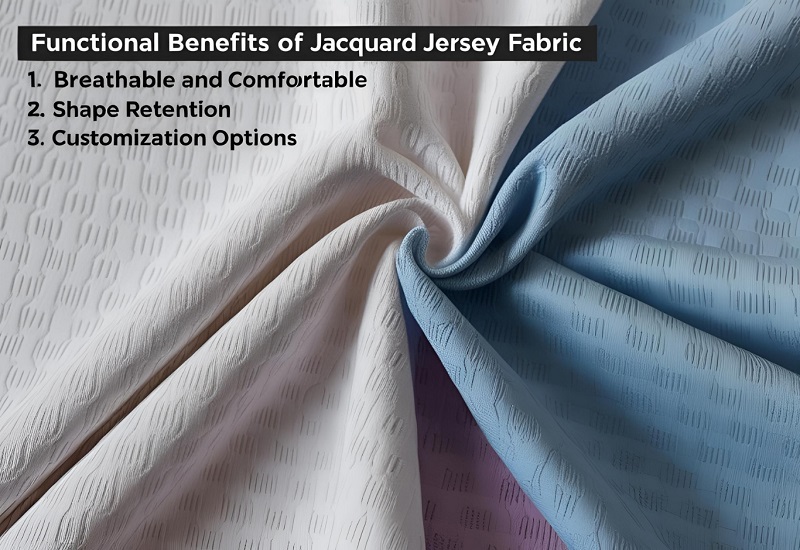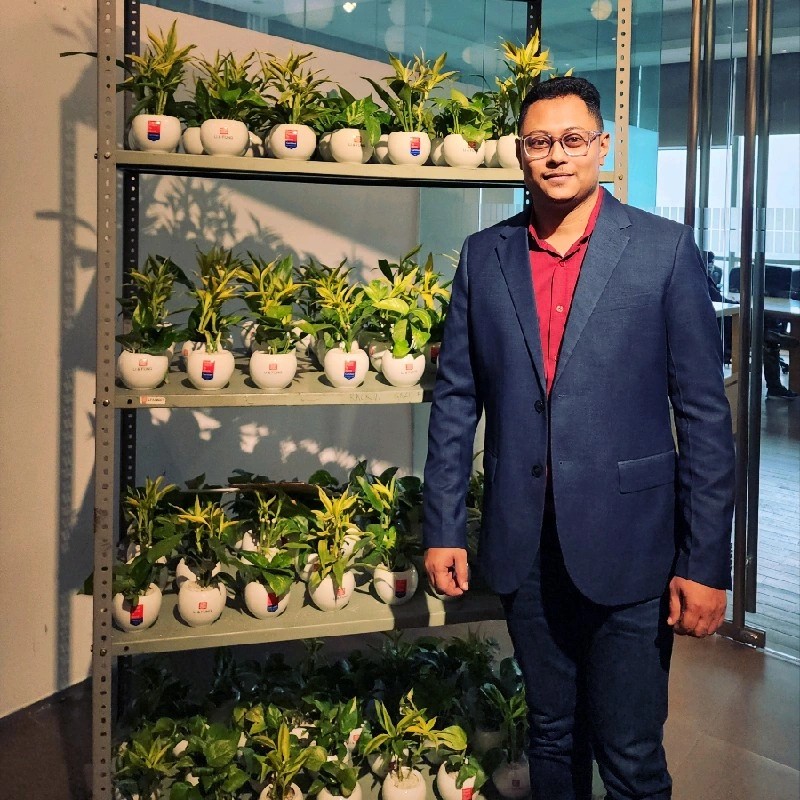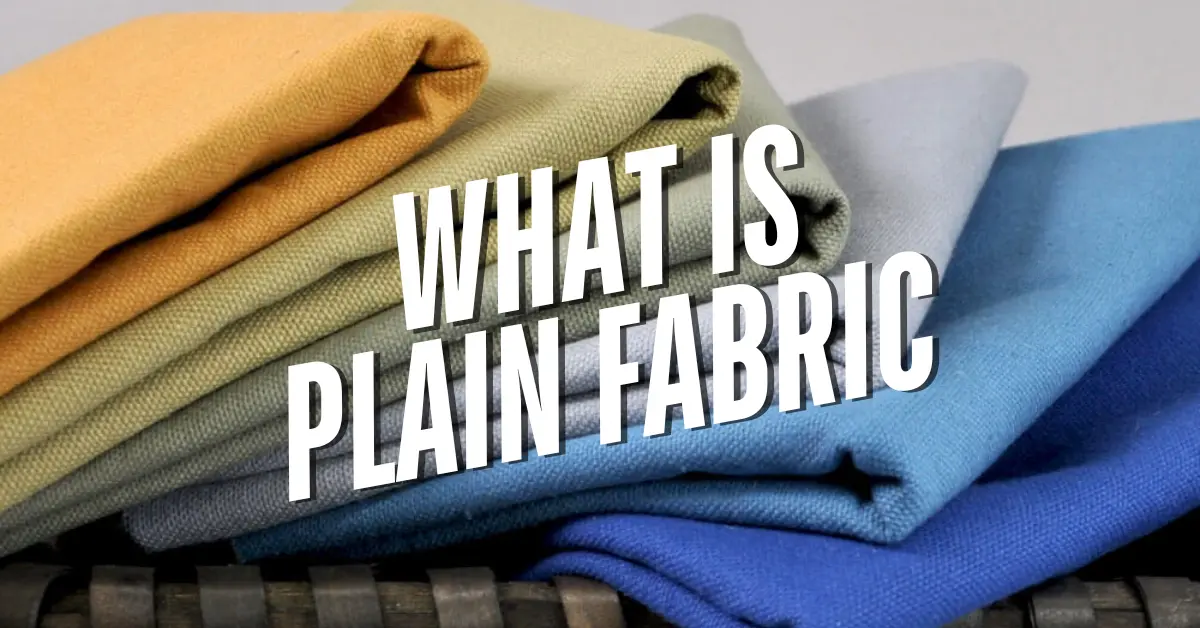Jacquard jersey fabric combines the decorative appeal of jacquard weaving with the comfort and stretch of jersey knit. This fabric is used widely in fashion, interior textiles, and sportswear due to its patterned design, soft feel, and practical benefits. In this article, we will examine the jacquard jersey fabric characteristics, including its structure, performance, care instructions, and common uses from a textile engineering perspective.
What is Jacquard Jersey Fabric?
Jacquard jersey fabric is a knit textile created using a jacquard loom or computer-assisted knitting machine. It allows patterns to be knitted directly into the fabric instead of printed or embroidered. The jersey base gives the fabric elasticity, while the jacquard technique provides detailed woven-in designs.
Key Jacquard Jersey Fabric Characteristics

Built-In Pattern Design
One of the key jacquard jersey fabric characteristics is its ability to hold complex patterns. The design is knitted as part of the fabric, not added afterward. This results in long-lasting patterns that don’t fade or peel.
Designs can range from florals and geometrics to logos and textures. These patterns are suitable for both single-color and multi-color arrangements, making the fabric highly adaptable for fashion use.
Soft and Textured Surface
Jacquard jersey has a distinctive texture. The raised pattern adds depth to the surface while maintaining the soft and smooth hand feel of jersey knit. The front usually shows the design clearly, while the back may show floats or minor texture differences.
This tactile surface improves visual interest and adds dimension, making it ideal for stylish clothing like tops, dresses, and jackets.
Stretch and Flexibility
Thanks to the jersey knit structure, the fabric has good horizontal and vertical stretch. It offers comfortable wear and adapts easily to body movements.
This characteristic is especially useful in garments that require flexibility such as activewear, leggings, and fitted apparel.
Strength and Durability
Another important jacquard jersey fabric characteristic is its strength. The fabric’s knit construction and pattern integrity make it durable. It does not easily lose shape or unravel.
This durability makes it suitable for upholstery, structured garments, and high-wear items like cushion covers or home textiles.
Applications of Jacquard Jersey Fabric
Fashion and Apparel
Jacquard jersey is widely used in both casual and formal garments. Its stretch and design make it suitable for blouses, skirts, structured dresses, and outerwear. The fabric blends function and appearance, which is important in both high fashion and daily wear.
Designers often choose jacquard jersey for collections that require both style and ease of movement.
Home Textiles
Jacquard jersey is also used in interior textiles. It appears in cushion covers, throws, and light upholstery. The patterns add elegance, while the knit gives softness and flexibility.
Home textile products made from jacquard jersey remain popular due to their comfort and decorative look.
Sports and Activewear
With its stretch, strength, and air circulation, jacquard jersey is ideal for activewear. It can be engineered to include ventilation areas or performance zones within the fabric pattern, making it both practical and visually appealing.
Functional Benefits of Jacquard Jersey Fabric

Breathable and Comfortable
The fabric allows airflow due to its knit structure, helping to regulate body temperature. This makes it suitable for year-round use, whether in light layering garments or breathable activewear.
Shape Retention
One of the jacquard jersey fabric characteristics appreciated by manufacturers is shape retention. Even after repeated use and washing, it resists sagging or overstretching.
Customization Options
With computer-assisted jacquard knitting machines, it’s possible to create custom patterns, logos, or branding elements directly into the fabric. This reduces the need for extra printing or embroidery.
Care Instructions for Jacquard Jersey Fabric
Washing and Drying
To keep the pattern and elasticity intact, wash jacquard jersey in cold water on a gentle cycle. Use mild detergent and avoid bleach. Machine drying is not recommended; air-dry the fabric flat or on a hanger to prevent stretching.
Ironing and Storage
If ironing is needed, use low heat and press from the reverse side. Store the fabric folded or hung on padded hangers in a cool, dry area to avoid wrinkles and fading.
Conclusion
Jacquard jersey fabric characteristics include stretch, durability, intricate patterns, and comfort. These features make it useful in fashion, home décor, and activewear. As a textile engineer, I can confirm its long-term value, thanks to its woven-in designs, breathable structure, and shape stability. Whether for clothing or interiors, jacquard jersey is a smart choice that offers both function and style when properly cared for.

Manager – Fabric Technical and Sourcing/Product Development/ Sustainable Material Management.
I am a B.Sc .-educated Manager of Fabric Sourcing and Technology with extensive experience in the apparel and fashion industry. Passionate about trend analysis, fabric sourcing, and sustainable textile solutions, I thrive in fast-paced environments that demand innovation, adaptability, and leadership.
As a servant leader, I am committed to honesty, transparency, and continuous process improvement. My expertise spans fabric development, product quality management, and supply chain optimization, ensuring exceptional performance across all facets of sourcing and production.
Core Skills & Expertise
✔ Fabric Sourcing & Development – Specialized in regular and sustainable textiles (BCI, Organic, Recycled).✔ Trend Analysis – In-depth understanding of global fashion and fabric trends.✔ Product Development – Expertise in material innovation and process optimization.✔ Quality Management – Strong focus on process control, ensuring high-quality production.✔ Leadership & Problem-Solving – Solution-oriented approach to team management and decision-making.
Technical Proficiency
🖥 Software & Tools:▪ Microsoft Outlook, Excel, Word▪ PLM (Product Lifecycle Management)
🌱 Sustainable & Ethical Practices:▪ Better Cotton Initiative (BCI)▪ Organic & Recycled Fabric Management
Key Strengths
✅ Solution-Focused Leadership – Driving innovation and efficiency in fabric sourcing.✅ Quick Decision-Maker – Adapting to market shifts and production challenges.✅ Team Player with a Positive Attitude – Ensuring collaboration and productivity.✅ Strong Time Management – Meeting deadlines while maintaining quality.
Professional Achievements
🏆 Li & Fung GEM Award – Recognized for fabric sourcing and supply chain management excellence.🏆 Group CEO GEM Award – Honored for outstanding leadership and process innovation.

